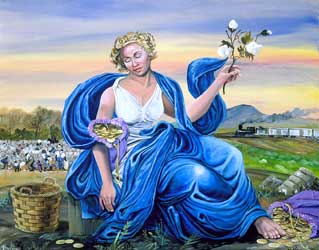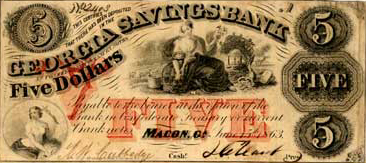|













| |
| |
|
|
|
|
|
Roman Goddess of Money
Within the slaveocracy, exploitation was economic,
political, socio-cultural, even biological and physical in character. New
groups of people such as mulattos emerged and were enslaved, thereby
expanding the numbers of the slave caste.
In the image titled “Slave Profits,” engravers
recycled a classic mythical figure to legitimate slavery. Moneta, a Roman
goddess of money, claims the riches of an enslaved labor system seen
toiling in the background. They work, and she gets the money. In recycling
the myth once more, notice how the artist John W. Jones chooses to tell
the story. Compare his creation of the goddess with that of the engraver.
Why did the artist paint Moneta, as a mulatto in the painting “Slave
Profits”? What other elements of the slave system are depicted in the
painting? |
 |
|
The Franklin G. Burroughs
Simeon B. Chapin Art Museum
3100
South Ocean Boulevard
Myrtle Beach, South Carolina |
|
"Slave Profits"
Collection of Dr. Harold Rhodes III
Charleston, South Carolina |
|
|
 |
|
Georgia Savings Bank, Georgia, $5.00
|
"In one allegorical picture
painted by Mr. Jones from a Georgia Savings Bank bill, a white figure that
is apparently that of Moneta, the Roman goddess of money, is in the
foreground holding a cotton plant as bags of gold spill open at her feet.
In the background, an overseer on a horse supervises a field of slaves as
a train arrives to pick up their harvest."
DAVID FIRESTONE of New York Times |
|
![]()